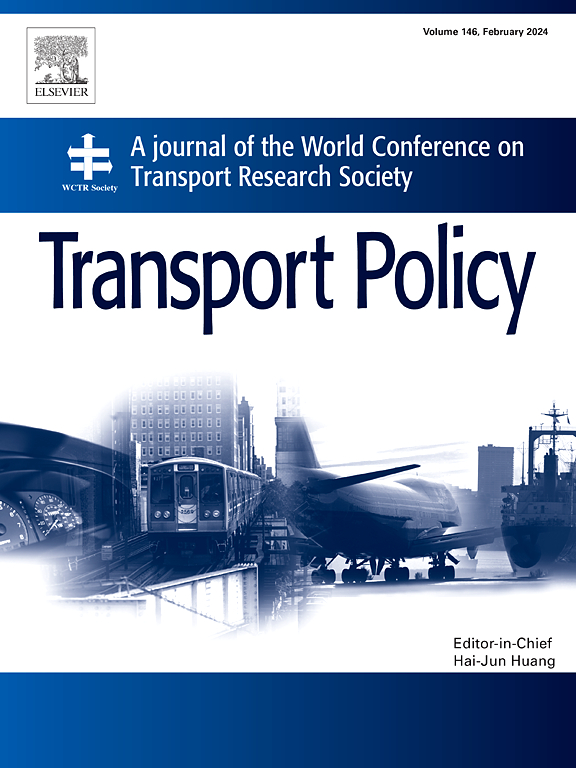Complex network analysis of China's domestic air cargo network based on actual flight data
IF 6.3
2区 工程技术
Q1 ECONOMICS
引用次数: 0
Abstract
Driven by the rapid development of China's e-commerce and logistics industries, the demand for air cargo has been steadily increasing. This study aims to analyze the spatiotemporal evolution and robustness of China's Air Cargo Network (CACN) using monthly operational data. The research employs complex network theory to examine spatial and temporal dynamics, integrates multiple central indicators for evaluating node importance, and assesses network robustness under various attack scenarios. Our study demonstrates that China's air cargo network faces challenges such as low route execution rates, an unstable structure, and significant cargo flow imbalances—particularly in low-traffic areas. Strategic hubs, such as Urumqi (URC), Kunming (KMG), Hangzhou (HGH), Shenzhen (SZX), and Nanjing (NKG) play vital roles., while the rise of Ezhou Huahu Airport (EHU) alleviates network pressure on major hubs. Moreover, our analysis reveals a distinct differentiation in hub airport roles, with the network exhibiting scale-free and small-world characteristics. The robustness of the network is shown to vary depending on the type of attack strategy employed, underscoring the need for targeted interventions to enhance overall network efficiency and resilience. Key findings reveal that CACN has a low route execution rate and an unstable structure, with significant cargo flow imbalances, especially in low-traffic regions. Additionally, CACN shows scale-free and small-world characteristics, with network robustness varying under different attack strategies. These insights provide a foundation for optimizing the network's efficiency and robustness.
基于实际航班数据的中国国内航空货运网络复杂网络分析
在中国电子商务和物流业快速发展的推动下,航空货运的需求一直在稳步增长。本研究旨在利用月度运营数据分析中国航空货运网络(CACN)的时空演化和鲁棒性。研究采用复杂网络理论考察时空动态,整合多个中心指标评价节点重要性,评估不同攻击场景下网络的鲁棒性。我们的研究表明,中国的航空货运网络面临着诸如航线执行率低、结构不稳定和显著的货流不平衡等挑战,特别是在低客流量地区。乌鲁木齐(URC)、昆明(KMG)、杭州(HGH)、深圳(SZX)、南京(NKG)等战略枢纽发挥着重要作用。而鄂州华湖机场(EHU)的崛起缓解了主要枢纽的网络压力。此外,我们的分析揭示了枢纽机场角色的明显差异,网络表现出无标度和小世界特征。网络的鲁棒性根据所采用的攻击策略的类型而变化,强调需要有针对性的干预来提高整体网络效率和弹性。主要研究结果表明,CACN航线执行率低,结构不稳定,货流不平衡明显,特别是在低客流量区域。此外,CACN具有无标度和小世界特性,在不同的攻击策略下网络鲁棒性不同。这些见解为优化网络的效率和鲁棒性提供了基础。
本文章由计算机程序翻译,如有差异,请以英文原文为准。
求助全文
约1分钟内获得全文
求助全文
来源期刊

Transport Policy
Multiple-
CiteScore
12.10
自引率
10.30%
发文量
282
期刊介绍:
Transport Policy is an international journal aimed at bridging the gap between theory and practice in transport. Its subject areas reflect the concerns of policymakers in government, industry, voluntary organisations and the public at large, providing independent, original and rigorous analysis to understand how policy decisions have been taken, monitor their effects, and suggest how they may be improved. The journal treats the transport sector comprehensively, and in the context of other sectors including energy, housing, industry and planning. All modes are covered: land, sea and air; road and rail; public and private; motorised and non-motorised; passenger and freight.
 求助内容:
求助内容: 应助结果提醒方式:
应助结果提醒方式:


